Laboratory Tables
Laboratory tables are one of the most essential pieces of equipment in any scientific, educational, or industrial setting where experiments and research are conducted. These lab tables are specially designed to provide a stable, durable, and functional workspace that can withstand the rigors of laboratory environments, which often include exposure to chemicals, heat, and mechanical stress. The design and materials of laboratory tables and equipment’s are tailored to meet specific needs such as chemical resistance, heat resistance, and ease of cleaning.
We offer a wide range of high-quality products to meet diverse needs. Our selection includes wood-based furniture and metal furniture, which provide both durability and aesthetic appeal. In addition, we specialize in lab furniture, featuring essential components such as fume hoods, safety cabinets, and work surfaces designed to support safe and efficient laboratory operations. Furthermore, we provide laboratory equipment, fixtures, and seating, all crafted to enhance functionality and comfort. With our comprehensive product lineup, we ensure that clients receive reliable solutions tailored to their workspace requirements.
Type of Laboratory tables
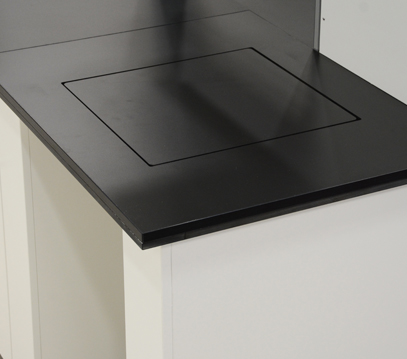
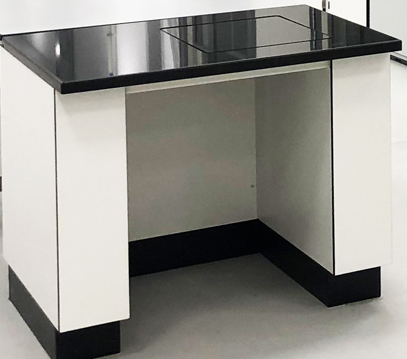
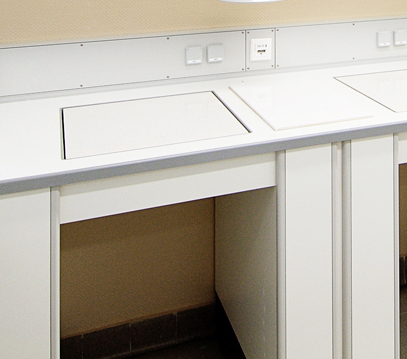
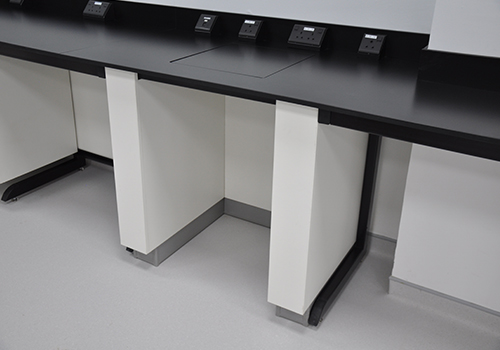
Balance Tables
Balance Tables are used to place sensitive balances or some sensitive equipment that needs to be isolated from vibrations. The Balance Table has an outer frame with a heavy worktop and an isolated platform supported by an inner frame that is entirely separate from outer frame. The isolated platform is placed on shock absorbing isolators to reduce the ground vibrations being transferred to the equipment on the platform.
Mobile Tables
Mobile Tables are made with fully welded or assembled table frames. These tables can be fixed with either standard or heavy-duty casters. Mobile tables provide versatility and flexibility in a laboratory setup. These Laboratory tables are ideal for moving heavy equipment or a setup from one location to another. Casters are lockable to provide safety and stability when the table is positioned in one place.
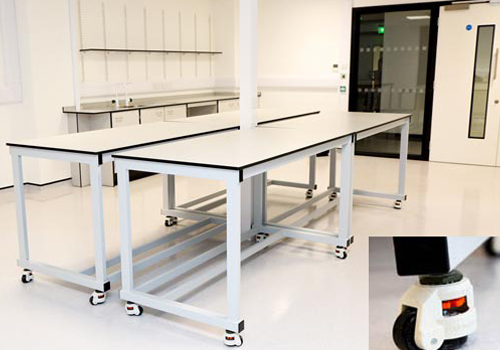
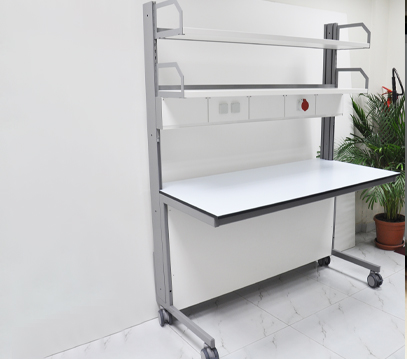
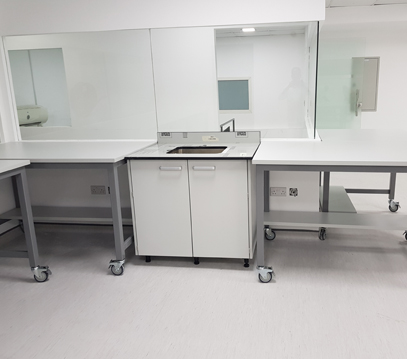
Laboratory Tables
Key Features of Laboratory Tables
Durability and Stability
The laboratory tables must be incredibly durable to withstand the demands of constant use. They are typically made from strong materials such as stainless steel, wood, or chemical-resistant polymers. Stability is equally important to ensure precise measurements and experiments are not disturbed by any movement during use. This is especially important in environments where sensitive instruments or chemicals are being used.
Chemical and Heat Resistance
Laboratories often deal with corrosive chemicals, solvents, and high temperatures. As such, laboratory tables are designed with chemical-resistant surfaces that prevent damage from spills or chemical reactions. Materials such as epoxy resin, phenolic, and stainless steel are commonly used due to their resistance to acids, bases, and solvents. Heat-resistant surfaces are also crucial in labs that work with Bunsen burners, hotplates, or other heating devices.
Cleanliness and Hygiene
In any laboratory, maintaining cleanliness is critical to ensure accurate results and prevent contamination. Laboratory tables are designed with smooth, non-porous surfaces that are easy to clean. Many laboratory tables are also equipped with built-in sinks for washing equipment, conducting experiments, or handling samples. The surfaces are usually designed to resist staining or etching from various chemicals, making them easier to maintain.
Ergonomics
Since laboratory work often involves long hours of standing or sitting, ergonomic design is a key consideration. Laboratory tables come in various heights and can be customized to accommodate users of different statures or particular tasks. Adjustable height tables are also available, allowing flexibility for tasks that require different working conditions. These ergonomic features help minimize the risk of strain and discomfort during prolonged use.
Modular and Customizable Design
The laboratory table often come in modular designs that allow them to be customized based on the specific needs of a laboratory. For example, additional cabinets, drawers, and shelving units can be incorporated to store chemicals, tools, and lab equipment. Some tables may even feature built-in power outlets or gas supply lines for experiments requiring electricity or gases. This modularity allows labs to create a layout that maximizes efficiency and safety.
Safety Features
Safety is a paramount consideration in laboratory environments, and laboratory tables are often designed with built-in safety features. For example, chemical-resistant surfaces prevent damage from accidental spills, while reinforced edges can prevent injuries. In addition, many tables are equipped with safety features such as grounding points for electrical equipment, splash guards for sinks, or gas shut-off valves for experiments involving flammable materials.










